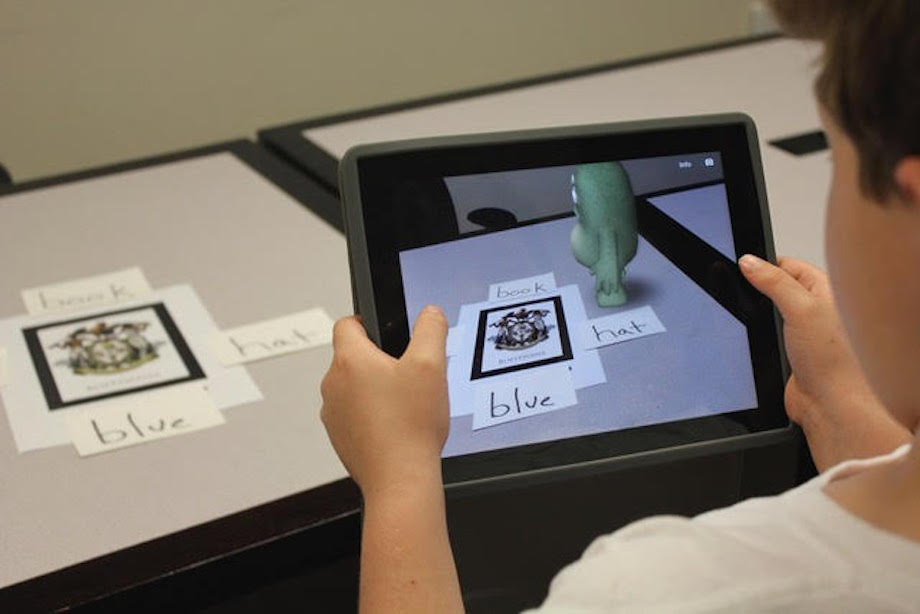At this year’s annual Apple Worldwide Developers Conference (WWDC), Apple released a suite of augmented reality development tools, which it refers to as ARKit. It’s only been out for a week, and already, it’s being called a game changer. It is user-friendly, in accordance with Apple’s defining ethos. It contains refinements of existing augmented reality tech. And it will be widely available on iOS 11, the new operating system for the iPhone and the iPad.
During its tech demo, Apple showed off a series of effects that are best described as impressive. One can take a digital coffee cup, place it on a table, and move it around; the cup will get larger and smaller to correspond with the distance from the iPad, creating the illusion of movement. Digital steam hangs in the air. A digital lamp creates digital light, which casts digital shadows on the tabletop.
Videos by VICE
Kyle Russell, partner of tech venture capital firm Andreessen Horowitz, tweeted out the following video of a fighter plane, mapped onto a real environment. In the video, the camera circles around the object to show off the motion tracking, which, according to Russell, animates at approximately 60 frames per second. The fighter plane maintains its positioning, even when Russell points the device away.
“The most impressive aspect of ARKit is that it tends to just work,” said Cody Brown, founder of virtual reality production studio IRL, in an online interview with Motherboard. “Other AR software often requires some sort of physical tracking mechanism (like a QR code), which inevitably becomes a major piece of friction if you are trying to get anyone to use this stuff.”
“Another incredible aspect of ARKit is how it handles lighting adjustments in real time, continued Brown. “I can only imagine the math and magic underneath this tech to make it work.”
Brown’s praise harkens back to Apple’s marketing slogan in the early aughts: “It just works.” Users don’t need to know how something works; it’s just important that it does.
“One thing that really stands out about augmented reality is its intuitiveness,” said Don McMahon, Professor of Special Education Technology at Washington State University and director of the Assistive Technology Lab, in an interview with Motherboard. “Compare that to virtual reality, which takes you to a completely different world that is completely artificial.”
“But with augmented reality, I can see the physical world around me,” continued McMahon. “There’s just a little bit of digital information overlaid on top of it.”

McMahon is a lead voice for AR technology serving practical, educational purposes, beyond the more obvious play. And in special education, which demands that individual students have individual learning plans, AR is a natural fit.
“Augmented reality is incredibly engaging, and it provides multiple ways to represent information,” said McMahon. “It’s going to become as much a part of education as mobile devices are currently.”
American schools fight a binary battle of “zero-tolerance,” treating smart phones and students’ technology as pure distractions, rather than co-opting their functions for learning environments. Augmented reality might endure similar growing pains. But McMahon gives several examples of how, done properly, augmented reality can serve a variety of educational functions.
For someone who is mentally disabled, an augmented overlay could help him or her navigate an urban environment, such as determining the proper bus to take, or traveling to a local store.

Flash cards can be made more interactive—instead of having the definition on one side and the corresponding word on the other, the word can lead to a graphic of the organ or system in question.
When iOS 11 launches in Fall 2017, it will become the largest AR platform in the world, making this new technology available to millions of users. And although we’re probably years away from having pervasive, augmented technology in modern life—head-mounted displays need to catch up for this to truly happen—this is the beginning of a revolution.
Get six of our favorite Motherboard stories every day by signing up for our newsletter .
More
From VICE
-

Screenshot: Nintendo -

Screenshot: The Pokémon Company -

Screenshot: Survios -

DJ Jazzy Jeff and someone from this list (Photo by Michael Ochs Archives/Getty Images)
